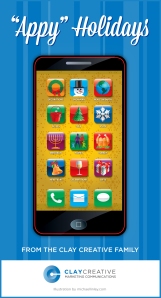3 ways to ensure your social brand is consistent
If you’re like most businesses, you have set up company profiles with several different Social Media networks. That’s great, because the more social your brand is, the better. But if you aren’t managing your profiles in an integrated way, you may actually be doing your brand a disservice.
Here are 3 steps you should take to make sure that your Social Media presence is integrated with your overall brand strategy:
 1. Choose Strong Branded Keywords
1. Choose Strong Branded Keywords
Branded keywords are words or phrases that tell your customer what your brand is about. You should know which words both entice your audience and carve your brand’s niche in the marketplace. Having strong keywords will make your SEO more relevant and enable you to rise to the top when your customer searches for you online. If you need help deciding which keywords will be the most powerful for your brand, you can use Google Analytics to view the top 5 keywords that customers use to reach your main website.
2. Use Keywords and Messaging Consistently
Once you have isolated your keywords and formulated relevant messaging that contains those keywords, use them in all of your social communications. Your repeated use of keywords on all Social Media platforms can bolster your search engine rankings and pay per click (PPC) marketing campaigns. Consistency will also prevent your brand personality from becoming diluted by changing tones and content on each Social Media site. For instance, how your brand interacts on Facebook and Twitter will be different because of the nature of those platforms. But, when you use the same keywords and messaging, customers will recognize your brand voice no matter where you are.
3. Manage Your Profiles and Track Your Engagement
Having multiple Social Media identities can get confusing, and it is difficult to stay on top of the responses your brand is receiving. Using online Social Managers like SocialMention.com or HootSuite.com can help you to Manage your profiles under one interface, schedule your Facebook and Twitter posts, see how your keywords and topics are trending, and even track what people are saying about you and your company.
These are just a few ideas for managing your social brand. For more information or help finding your brand’s keywords, contact frank@ClayCreativeResults.com.



 Posted by Jessica Clay
Posted by Jessica Clay 






